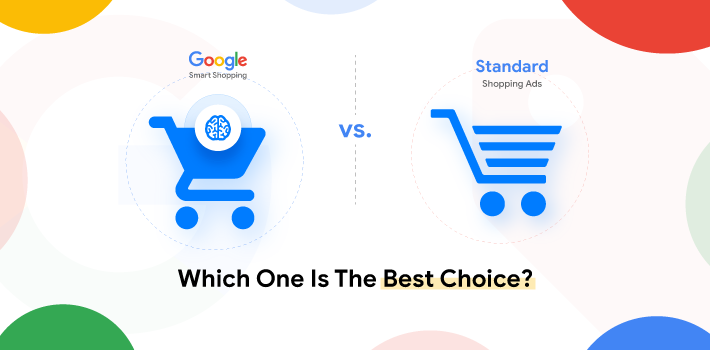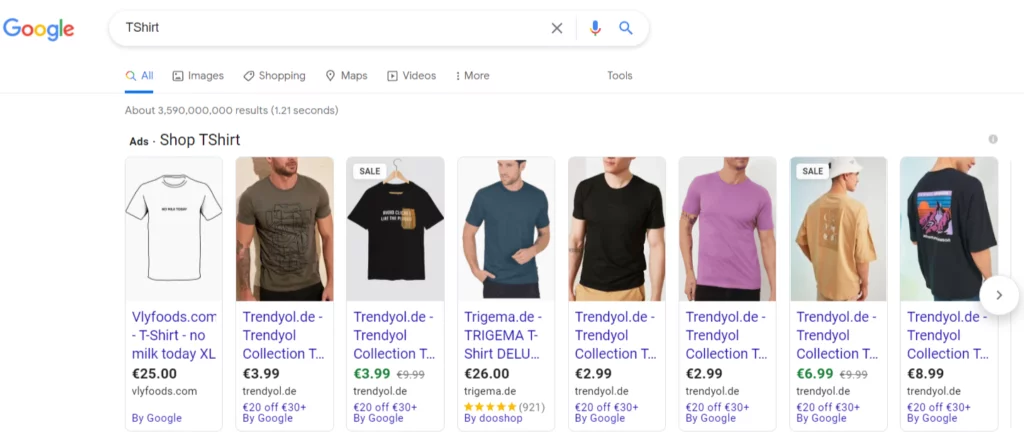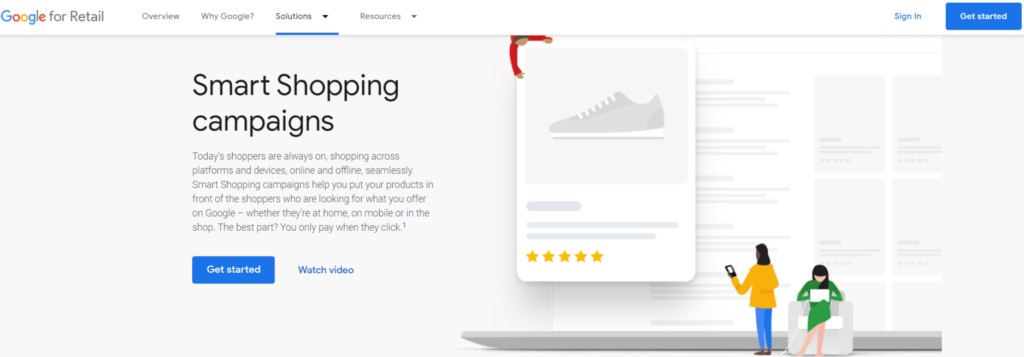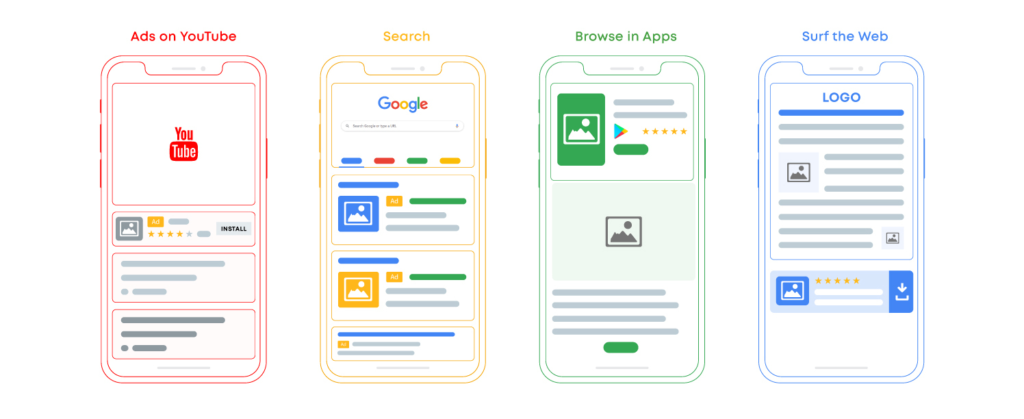
Google Smart Shopping vs. Standard Shopping Ads- Which One is the Best Choice?
Automation and machine learning are both having a substantial influence on the eCommerce sector. Google is no exception to that; its smart shopping campaign is the ideal example.
Therefore, many marketers prefer the smart shopping campaign due to its high effectiveness and productivity. Whereas others continue to rely on traditional shopping campaigns since they are more manageable.
Google has become AI-centric and enriched the process of simplifying advertisements. Hence, with a smart shopping campaign, they are implementing dynamic ads placement. In addition, they have made the bidding process automated.
In terms of Ad spend, standard shopping campaigns beat smart shopping campaigns.
But a smart shopping campaign is well ahead while measuring the Ads’ performance. With the rise in popularity of smart campaigns, the issue remains: which works better: smart or standard?
This article will provide you with an analytical comparison between Google Smart Shopping vs.Standard Shopping ads.
We’ll also provide you with some great tips on whether a single method works best for your business needs or whether you need to combine the two.

What is Google Standard Shopping Campaign?
A standard shopping campaign is a standard service that is widely used by most retailers to sell their products.
Shoppers can search, compare, and purchase their preferred product from the search engine result pages (known as SERPs) of Google.
Google users may buy things from a variety of businesses that have paid Google to market their products.
For example, if you are looking for a product online, you will head straight to Google and search for it.
All you need to do is type in the keyword on the Google search option and hit enter to get it.
Google will generate the search engine result pages with the product information, including the link to different retailers. Below is an example:

Standard Shopping Ads represent the product image along with the price and brand name.
Google represents the shopping ads when someone puts a keyword such as “T-shirt” on the search engine.
This product information is built off a product feed and then displayed on top of search engine result pages.
Common things between Smart and Standard Shopping campaigns are:
- Opening an account on Google Merchant Center
- Setting up Google Ads
- Creating a product feed file
- Selecting the country
- Deciding the budget
What Can You Do with Standard Shopping Campaigns?
Surprisingly, in a standard shopping campaign, you will get more options available for you as an advertiser.
In this campaign, you can create Google shopping campaign without choosing the smart option.
Moreover, you can gain access to the entire portfolio of options within Google Analytics for shopping campaigns.
With Standard campaigns, you can get numerous valuable options:
- You can get a detailed report on the search terms. As a result, you can monitor what search keywords people use when they click on your products.
- According to campaign priority, you can create a campaign funnel.
- Group your products and Ads so that you can categorize and bid properly
- You can apply multiple bidding strategies. Hence, you can include the entire manual, target CPA, and target ROAS. Besides, you can maximize the conversion value after a certain number of transactions.
- Have complete control over your ads. So, you can decide when and where to show your ads and also bid accordingly.
- Target your preferred location to display and bid on your standard shopping ads.
- Select your target audience as well as retarget your audience choice.
What is Google Smart Shopping Campaign?
So, what exactly is Google Smart Shopping Campaign?
You can immediately tell by the name “Smart Shopping Campaign” that it would provide you with powerful advertising options.
The campaign makes the overall management of the ads campaign very simple. As a consequence, your conversion value increases as your client base expands.

When we talk about Smart shopping vs. Standard shopping, the word “Automation” also comes in.
It is the perfect combination of the Standard Shopping campaign and Google’s machine-learning algorithms.
Smart Shopping campaigns help you get the most out of your efforts in terms of performance and conversion value.
Besides, it makes overall campaign management easier for the users. They optimize themselves to identify consumers who are more likely to convert and spend more money.
Advertisers using smart campaigns saw a 20% increase in conversion value at a lower cost per conversion.
Key Benefits of Google Smart Shopping Campaign
Google’s machine learning leverages your product feed to present a range of ads across multiple Google networks.
Firstly, Google evaluates various combinations of the picture and text elements that you provide.
Secondly, according to user engagement, they pick and display the most relevant ads automatically.
Finally, your product gets promoted via relevant Ads within various networks of Google.
Smart Shopping campaign displays Product Shopping Ads, Local Inventory Ads, and display responsive ads.
Furthermore, the Ads are represented in Google networks that are mentioned below:
- Google Search Network
- Google Display Network
- YouTube
- Gmail

These are the benefits of the Smart Shopping campaign that you must know:
- With this campaign, you will get qualified leads. Therefore, Google represents the search result according to customers’ search queries. Besides, qualified leads allow Google to represent specific product data that customers want.
- This Ads campaign represents the ads multiple times for a single search term. Moreover, the product image, description, and store information are all relevant. As a result, customers will get reliable options to choose from, and your business will reach more people.
- It combines your Google product feed and assets into ads and displays on different networks. Google’s powerful algorithm represents the best-performing ads to the customers.
- With this campaign, you will get access to all the useful insights related to the ads. You’ll get reports on clicks, costs, and conversion by category, product, type, brand, and more.
Hence, you may utilize the information to optimize certain areas of your campaign.
- For each ad in your campaign, Google places the bid automatically for the most conversion value at the lowest cost.
- This shopping campaign integrates with other platforms such as WooCommerce, and Shopify. Therefore, it is a seamless marketing and tracking experience for the users.
Smart Shopping Campaign VS. Standard Shopping Ads: Analytical Comparison
The most apparent distinction between Smart shopping vs. Standard Shopping campaigns is automation.
This is because the Smart campaign utilizes machine learning to optimize and manage the campaign. But there are more differences than we have highlighted below:
| Google Smart Shopping Campaign | Google Standard Shopping Campaign |
| Completely automated services | Take full control of the campaign |
| The setup process is fast and easy | It takes more time to setup |
| Cannot control the network placement of the Ads | Decide the network placement of your Ads |
| Limited location targeting capabilities | Control your location targeting |
| Lesser chance to add negative Keywords | Add preferred negative keywords |
| It saves more time because minimal maintenance required | Requires more time to manage the overall campaign |
| Automatically fetches data from the product feed file(images, texts, and combinations) | Requires manual testing for images and texts |
| Limited to a single landing page | For multiple ads, it provides multiple landing pages |
| Customized scheduling is not applicable | You may apply customized scheduling |
As you can see, the only downside of a smart shopping campaign is the use of a landing page.
For multiple ads, you will be getting multiple landing pages in a standard campaign. However, a smart campaign allows you to utilize the Catalog page as a landing page.
The Strengths and Weaknesses of Traditional Shopping Ads
This is the part you were waiting for, right?
So now let’s talk about the strengths and weaknesses of Smart shopping vs. Standard Shopping Ads. At this point, we will provide you with some strong knowledge that will assist you in deciding which campaign you should select.
The exciting fact is that you can use either one or both of them to get a better output.
Yes, you can apply a combined approach by using both of these campaigns, but it depends on your business requirements as well.
So, let’s start with the good old shopping Ads and the reasons behind using them:
Product Segmentation
Within a single campaign, you are allowed to segment your products. For example: if you use product ad groups, you can segment your products in a more sensible way.
As a result, you can segment your products according to brand, product category, or brand and category.
Search Term Report
Based on the search term report of this campaign, you can create a list of dos and don’ts.
Remember, unlike typical search campaigns, we’re not focusing on keywords.
The product names and descriptions are utilized by Google to decide which search phrases or product advertisements will appear.
Google likes clicks, and it doesn’t matter if every click is not relevant to them. This is, however, something that we should be concerned about.
Creating negative lists should be an important element of our overall campaign strategy.
Creating a Tier System
You can differentiate general, brand, and product-specific search terms by creating a tier system.
Thus, you can bid more confidently on search terms that are available at the bottom of the funnel.
It may sound a bit complex, but the following example may help you clear out the confusion.
- High Priority Campaign – Tier 1 – General terms – i.e., men’s T-shirt – 40c CPC.
- Medium Priority Campaign – Tier 2 – Brand terms – i.e., Nike T-shirt – 60c CPC.
- Low priority Tier 3 – Brand & product – i.e., Adidas T-shirt – 80c CPC.
In this example, we are bidding more flexibly on searches that are closer to sales.
Therefore, we don’t bid the same resource value for every product.
Utilizing the Manual or Automated Bidding
After getting enough conversions and sales outputs, we can apply a manual or automated bidding strategy.
Before moving to the automated campaign, we highly recommend you use the manual bidding strategy.
When you are getting enough sales flow or at least one sale per day, do use automated bidding.
Lets now focus on the drawbacks of the Standard Shopping Ads:
- The Setup Process of this campaign might be a bit complex at the beginning. Features such as Negative Lists, Ad groups, and Tier systems may sound confusing, but it will take time to adapt.
- Constant maintenance and attention are required to tune the search term list and create a negative list.
- For beginners, it takes much time to get success via Ads because most of the processes are done manually. Owing to this, you need to gather experience to make the right decision and then expect profit right away.
- It requires experience and research to implement tiered campaigns. You will eventually grasp the customers’ needs and be able to disperse the budget correctly.
The Strengths and Weaknesses of Smart Shopping Ads
Now, we will be focusing on the pros and cons of Smart Shopping Ads. This type of campaign ad will give you the following advantages:
Easy Setup Process
There are a number of steps to follow if you want to create a Smart Shopping Campaign. First of all, you need to enable conversion tracking and include a global site tag on your virtual store. To get detailed info on this, please visit Google’s Requirements for Shopping campaigns page.
Broader Reach
Ads on these shopping campaigns always get a broader reach due to a wide range of display targeting and dynamic product placements. An eCommerce store with fewer products can get a lot of advantages with this wider reach.
Choose from fewer Options
All you need to do here is pick the products that you want to advertise or promote. Subsequently, you have to fix the ROAS that you Google to gain. Remember one thing that you need to be realistic while estimating your Ads budget.
Google’s AI
In this campaign, you don’t need to bother using your experiences or expertise. However, you will be able to make the most out of our budget via Google’s well-designed algorithms. However, the Smart shopping campaign is not pitch-perfect but has positive reviews in most cases.
Rapid Output
Automation always gives you precise results in the fairly shortest possible time. Let’s not think that we are promoting a Smart shopping campaign. Actually, it is evident that many businesses achieved a great amount of ROAS very shortly without any professional experience.
Unavoidable Issues with Smart Shopping Ads:
- This campaign minimizes your working effort by taking control over bidding and Ads placement. You can just sit back, and Google will do the rest of your marketing activities.
- You won’t be getting complete access to analytical data collected by Google. This means there is no product group or search term to focus on.
- You will miss out on some essential features of this campaign. As a result, you won’t be able to use custom scheduling, network placement, location targeting, and put negative keywords.
- When the result starts coming, you won’t be able to change anything according to your preferences. This is one of our biggest concerns because you are really putting your success or failure in Google’s hands. One slight mistake can put your company and its revenue in the wrong position.
As you can see, this isn’t an easy decision.
On the one hand, both forms of Shopping ads have crucial advantages.
On the other hand, they also have drawbacks that are not avoidable.
That is why a proper comparison between Smart shopping vs. Standard shopping is necessary.
If you test your Smart Shopping campaign and it outperforms your expectations or rapidly achieves an acceptable ROAS, we recommend you stay with it.
However, if you aren’t getting the expected outcome, move on to the Standard shopping campaign right away.
How Standard Campaigns Outperforms Smart Campaigns
Currently, smart campaigns are the point of connection where customers are communicating with businesses.
One might say – “Hey, the ads and the full campaign is running automatically, so let’s not waste any effort.”
Without analyzing Smart shopping vs. Standard shopping, you better not decide or stick with one.
Once you are totally reliant on the positive output of a smart shopping campaign, it will become hard to switch to the standard option.
We recommend you think dynamically while selecting the shopping campaign.
Getting full control over cost per click is the main advantage of the Standard Shopping campaign.
Three primary triggers in eCommerce are your CPC, average order value, and conversion rate.
However, in Google Shopping, you can easily control the CPC of your campaign.
Example 1
We are yet to mention a perfect example that will show the outcome of switching from a smart to a standard campaign:

We simply changed our campaign from smart to standard and minimized the bids from $1.42 to $0.30. In a smart Shopping campaign, Google set the bidding amount at 0.88c on average, but we set the bidding amount at 0.52c.
We analyzed that we can gain the same number of clicks by investing our mentioned amount.
Though our conversion rate was slightly lower, we did achieve a more profitable ROAS of 9.58.
In addition, we have almost got 3000 clicks through both campaigns.
If we compare the smart campaign, we have earned almost $4.00 extra against every $1 spent. The amount is really considerable for any eCommerce business.
Example 2
Let’s analyze another example where we’ve switched the campaign from Smart to Standard:
This time Google recommended setting our bidding amount at $1.42, but we set the amount at $0.30c.
As a result, the ratio of our conversion rate was outstanding, and the ROAS soared to $68.87, which is huge.
We could invest more in this scenario and get more sales by losing some of the ROAS.

Ultimately, eCommerce is all about raising the outcome of sales by keeping up a significant amount of profitability.
By analyzing these examples, we think that Google has become more money-grubbing.
Why? If you take a closer look at our example, in both cases in the smart shopping campaign, they have suggested more budget.
But with a lower budget, we’ve met our objective of profitability.
This is why you should not totally rely on Google’s AI to set the budget for your campaign.
Smart Shopping vs. Standard Shopping – Which One is Best for Your Business
At this point, let’s overview what we’ve learned about these two Ads campaigns. Hence, you can decide which one to utilize in what settings.
Standard Google Shopping Ads Campaign
You have to take a manual approach to set up, configure and schedule traditional shopping Ads.
It takes more time to adjust to this form of advertising, and success is entirely dependent on you and your organization’s skills.
However, you can control your ads with full access to Google Shopping ads and Google Analytics.
Who should take advantage of the Standard Shopping Campaign?
- If you are not in a rush, and you have enough time to spend to optimize your Ads campaign.
- When you prefer complete control over your Ads campaign and don’t want to rely on Google’s AI to take care of your bidding and budget.
- You want a complete insight into your Ads campaign and then apply changes to your Ads.
- Have enough marketing experience in scheduling and placing Ads properly.
- Confident about getting enough profitability by setting a proper budget and polishing the campaigns.
- You are dissatisfied with your ROAS and believe that you can reach higher numbers if you take the time to fine-tune your campaigns.
Smart Shopping Ads Campaign
You don’t need to be a pro marketer to make use of this type of Ad and let Google’s AI do most of the work.
Moreover, it’s ideal for those who have less time to create and maintain the campaign. Therefore, after setting up or launching an Ad, you can be relaxed until it serves you a sustainable ROAS.
If you are owning an eCommerce store with a huge inventory, including renowned brands, Smart shopping is ideal for you.
As your account’s sales increase, don’t forget to check your ROAS objectives in the campaign settings.
Many accounts have deserted the original ROAS, despite the automated bids producing considerably greater results.
If it has accomplished the present objective, we constantly want it to seek a new one.
Who Should Take Advantage of Smart Shopping Campaign?
- If you are in a rush and willing to rely on the automated process of Google.
- Starting the advertisement campaign for the first time. Hence, not confident about your capability of making a sound judgment for the campaign.
- Want to rely on Google’s automated features to get a significant amount of conversion and reach.
Your campaign type will help you decide which type of Ads to focus on and how much budget should be declared.
Well, we don’t want to lead you into any misconception here.
You can always use any type of campaign according to your preference and business requirements.
In fact, you may mix these Ad campaigns by beginning with one and progressing to another.
How to Combine Smart and Standard Shopping Campaigns?
With the combination of two Google Shopping ads, you can gain a notable amount of benefits.
Here are two approaches you may take if you don’t like making decisions or if you want to be in charge.
In Google Shopping, you are allowed to run multiple ad campaigns. Therefore, you can start using the traditional campaign for some of your Ads.
Furthermore, you can apply the smart campaign for other ads that you are running. To elaborate, what you can do is –
- When you are willing to save time and automate as well, utilize the smart shopping campaign. Remember – with this campaign, you will be running campaigns that include lower risk & budget.
- For low average order value products, the ideal approach is utilizing the standard shopping campaign. Hence, you can control and manage your bids more accurately.
- When you are marketing high-value and high-performing products, a Smart shopping campaign is for you. Leveraging this campaign, you will be able to expand product visibility and scale. Moreover, you can use both the shopping & display Ads with the mixture of machine learning features of Google.
- Traditional shopping ads are ideal for campaigns that require greater management. For high-priority, costly and time-consuming campaigns, this campaign works best.
What should be the strategy?
We recommend you move between campaigns after starting with one of them. Many businesses have found this innovative approach beneficial. In Particular, they had achieved a huge profit when they maintain a proper sequence.
First of all, create your Ads using a standard Google shopping campaign. Control your campaign with manual CPC and take your time to optimize it so that your sales volume goes up within a 30-day margin.
If you can help Google discover your best clients in the short run, their algorithm will work better for your campaign.
Secondly, you need to shift your campaign to a Google Smart Shopping campaign for automation purposes. As a result, google’s machine-learning capability will take your campaign to a new extent.
Let’s say, you are getting 30 sales per 30 days and close to 100 on your standard campaign. Therefore, your campaign data will Assist Google’s machine learning capability to bring you an effective result quickly.
At the end of the day, you are getting the best output with a minimum work effort.
Wrapping Up
So what’s your thought about the Smart shopping vs. Standard shopping campaign?
How much did you learn?
First of all, we want to highlight that the Google shopping campaign is one of the best ways to promote any eCommerce business.
To stand out in this competitive marketplace, you must participate via Shopping ads. Otherwise, you will miss out on a huge user base that Google includes.
As we have mentioned earlier that Google wants you to invest more, but in return, they will provide an increased number of relevant clicks.
Therefore, you should move forward with the standard campaign to control your ads in exchange for your time and manual work effort.
If you are a fan of the automated approach of Google, the Smart Shopping campaign is your tool.
Obviously, it will lower your effort at the expense of control and budget, but in the long run, it will outperform the standard campaign.
What we recommend is, you start with a standard campaign, get a significant amount of sales, and then move on to a smart shopping campaign.
Read More
- How to Generate Google Product Review Feed on Google Shopping
- How to Create Google Dynamic Remarketing Feed on WooCommerce (Easy Way)
- The Ultimate Guide to Google Shopping Title Optimization (The Best Way)
- Google Shopping Annotations: Tips and Tricks to Improve Your Product Listings
- How to Generate Google Local Inventory Feed on WooCommerce
- Google Shopping Automation and Optimization for WooCommerce Store

